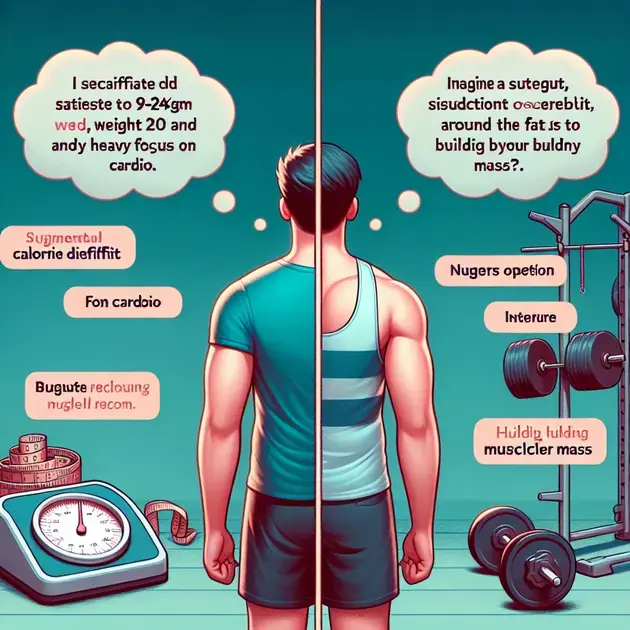
Title: Weight Loss Journey: Choosing Between Calorie Deficit and Strength Training
Introduction:
Hello everyone! I am a 20-year-old, standing at 1.92cm/6.4ft tall and weighing 96kg/213 pounds. I have decided to embark on a weight loss journey to shed around 10-15kg/30-40 pounds as I feel unhealthy and unhappy with my physical appearance. The excess weight seems to be concentrated on my face and lower belly. I am torn between two options: opting for a significant calorie deficit and focusing on cardio, or starting a strength training regimen to build muscle mass. I would greatly appreciate any suggestions, advice, and personal experiences from individuals who have tried these options. Thank you in advance to everyone who comments!
Weight Loss Options:
When it comes to losing weight, there is no one-size-fits-all approach. Different methods work for different people, so it’s important to find what suits your body and lifestyle best. In your case, you are considering two popular routes: a large calorie deficit and cardio exercises, or strength training to build muscle. Let’s explore both options:
1. Calorie Deficit and Cardio:
A calorie deficit occurs when you consume fewer calories than your body needs to maintain its current weight. This can be achieved by adjusting your diet and increasing physical activity, particularly cardio exercises such as running, cycling, or swimming. Cardio workouts help to burn calories, elevate your heart rate, and improve overall cardiovascular health. Here are a few considerations:
- Track your calorie intake: Use a food diary or calorie tracking app to monitor your daily caloric intake to ensure you stay within your desired deficit range.
- Focus on nutrient-dense foods: Opt for whole grains, lean proteins, fruits, and vegetables to meet your nutritional needs while maintaining a deficit.
- Set achievable goals: Gradually increase the intensity and duration of your cardio workouts over time to avoid burnout and injuries.
- Stay consistent: Aim for at least 150 minutes of moderate-intensity cardio exercises or 75 minutes of vigorous-intensity workouts per week for optimal results.
2. Strength Training and Building Muscle Mass:
Strength training involves working with weights or resistance to challenge and stimulate muscle growth. Building muscle mass can positively impact your metabolism, even at rest, as muscles require more energy. Here are a few tips:
- Start with a plan: Consult with a fitness professional to create a tailored strength training program that aligns with your goals and ensures proper form and technique.
- Gradual progression: Begin with lighter weights and gradually increase the load as your muscles adapt and become stronger.
- Compound exercises: Incorporate compound movements like squats, deadlifts, bench presses, and rows into your workouts, targeting multiple muscle groups simultaneously.
- Rest and recovery: Allow adequate rest days between strength training sessions to give your muscles time to recover and grow.
- Patience is key: Building noticeable muscle mass takes time, so stay consistent and be patient with your progress.
Conclusion:
Ultimately, the choice between a calorie deficit and cardio or strength training depends on your personal preferences, goals, and what you enjoy. It’s crucial to remember that sustainable weight loss takes time and consistency. Consider incorporating a balanced approach that combines both aspects, such as incorporating strength training alongside a moderate calorie deficit and cardio routine. Experiment, stay motivated, and find what works best for you on your weight loss journey. Good luck!